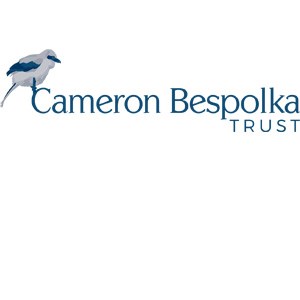Almost a fortnight ago, my Twitter feed lit up with photos and reports of the white stork which had been spotted at Rutland Water, my local reserve. This was super exciting being the second record for the reserve, and although I missed it I wanted to find out a bit more about this species which has a history in the UK, as well as some interesting folklore here and around the world.
The white stork (Ciconia ciconia) is now extinct from Britain due to persecution (as a symbol of Christianity), habitat loss and hunting, although about 20 individuals are spotted annually across the UK. The last breeding record was a pair which famously nested on St. Giles Cathedral in Edinburgh in 1416; 601 years ago. Nowadays all that is permanently left of these beautiful birds are place names (such as Storrington, West Susses, which was listed as ‘Estorchestone’ in the Domesday Book, meaning ‘homestead of the stork’) and records of their consumption at medieval banquets. The species also has a considerable presence in culture and folklore across the world, with familiar and unusual tales about their relationship with, and significance to, humans.
Storks feature in two of Aesop’s Fables; one story drew the moral that one must do unto others what one would like done unto oneself (The Fox and the Stork), and that associating with bad companions can have bad consequences (The Farmer and the Stork). Their use in these fables doesn’t have much of a reflection on their behaviour, but does highlight their presence and significance in historical cultures.
These birds were also a symbol of caring for aged parents, which they were thought to have done in the wild, particularly by Aristotle and Pliny. A Greek law, ‘Pelargonia’ (from ‘pelargos’, Greek for stork) required people to care for their elderly parents as inspired by the storks. The Greeks were also the creators of the myth that storks deliver newborn babies, using the story of Gerana and Hera. Gerana was a Pygmy woman, turned into a stork by Hera (goddess of women and marriage) as punishment for her hatred of the goddess. Gerana, as a stork, wanted to get her baby son back, but was fought away by the Pygmies who from then on were at constant war with the storks. In some versions of the story the Pygmies chose battle with cranes, but the image of Gerana as a stork carrying her baby son in her beak is the origin of the modern connotations of storks and babies. In some cultures, the birthmark on the backs of babies heads is called a ‘stork bite’ after this imagery.
German and Dutch households would encourage storks to nest on their houses as this was believed to bring good luck; Roman writers noted the arrival of these great white birds in spring which was a sign to farmers to plant their vines. Clearly storks were once a very prominent symbol for people all over Europe, but for me the most interesting example of stork-human relations is the Pfeilstorch- ‘arrow stork’ in German.
I first saw a model of a Pfeilstorch when visiting Braunsweig natural history museum (a fascinating zoology exhibition which I would recommend if you are ever in Braunsweig). All of the information plates were in German, so I just appreciated the visual information instead; a recent visit to the University of Exeter’s Penryn campus enlightened me further to the strange model of a white stork with an arrow piercing its neck.
A sample lecture delivered by Dr. Lucy Hawkes (an amazing research scientist who most recently did an investigation into bar-headed geese migrating over the Himalayas (https://www.ncbi.nlm.nih.gov/pubmed/23118436)) about bio-logging was introduced with the brief story behind these storks in Germany with arrows embedded in them. Dr. Hawkes explained that these storks became crucial in understanding European bird migration after it was realised that the arrows belonged to African tribes people who would hunt the storks whilst they wintered on the continent before returning to Europe in spring to breed. The first Pfeilstorch was found in 1822 near a village called Klütz in Germany- the arrow through its neck was from central Africa, about 8500km away, proving the long distance migration of some bird species. Before this revelation, it was thought that bird turned into mice in the winter, or hibernated underneath the sea, explaining their sudden disappearance in the winter months. I think that this is an amazing introduction to modern day understanding, with technology such as satellite transmitters and the widespread knowledge of bird migration now helping us to further increase our understanding.
So storks are pretty cool- and, according to ‘Rewilding Britain’, are perfectly suited to re-introduction in the British Isles. 22 injured storks from Poland (injured by flying into power lines) were brought to Norfolk in 2015 to recover, though not to be released as they had lost the use of their wings unfortunately. They now stay at the Shoreland Wildlife Gardens, and reports at the time say that their offspring could potentially be used for future re-introductions.
Although the white stork has yet to make a comeback in the UK, re-introductions have taken place (and had success) in parts of Europe. I hope that in my lifetime these fascinating birds, shrouded in myth and legend, will breed once again in the British Isles as they did under 1000 years ago. Whether you support re-introductions or not, there is no denying that these birds are utterly beautiful and bring such excitement for bird watchers across the UK.
